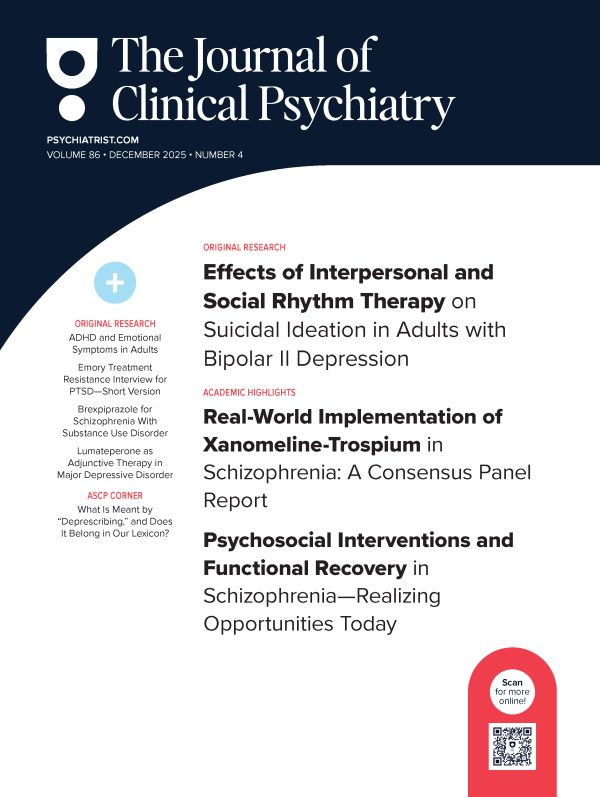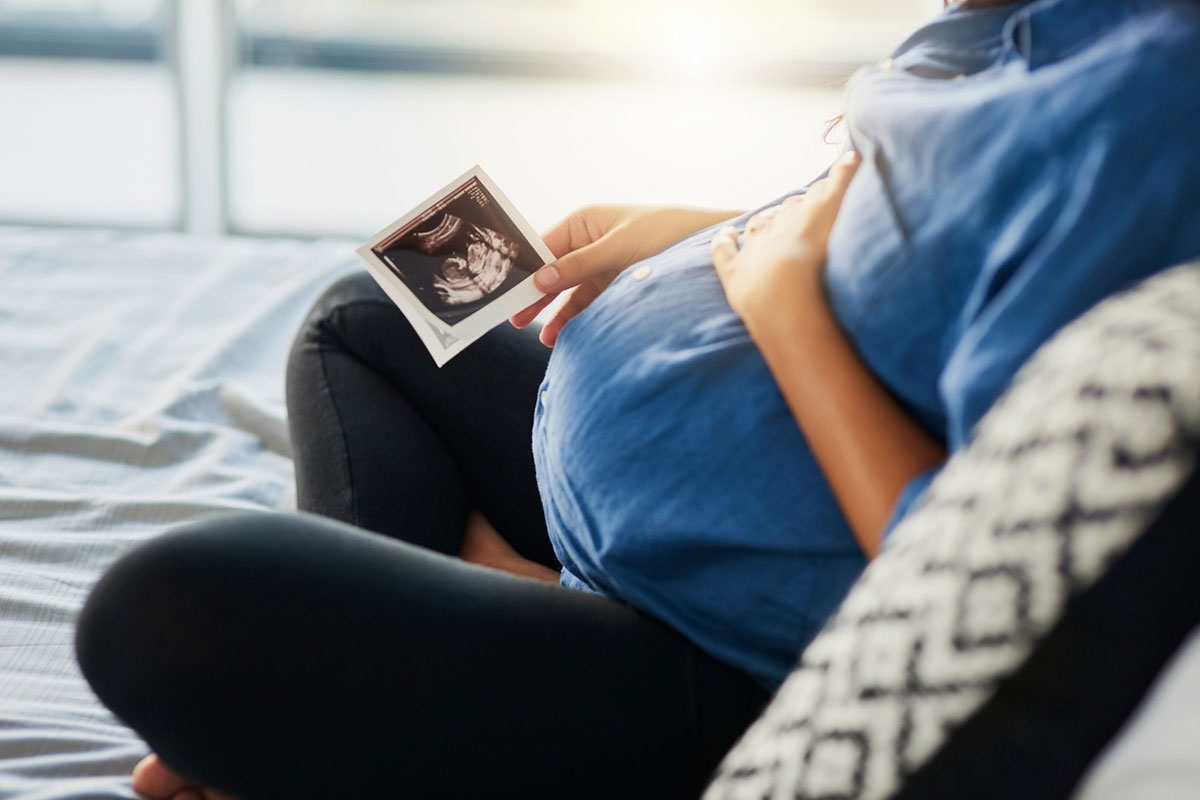Abstract
Background: The roles of Klotho and matrix metalloproteinase (MMP)-9 in the pathomechanisms underlying first episode major affective disorders as well as their impact on related inhibitory control function remain unclear.
Methods: This study included 44 adolescents with first-episode bipolar disorder, 60 with first-episode major depressive disorder, and 46 age matched healthy controls between January 1, 2021, and August 31, 2024. DSM-5 criteria were used to make the diagnoses of 2 major affective disorders. All the participants were assessed for levels of Klotho and MMP-9 and completed the go/no-go task. Generalized linear models (GLMs) were employed to compare Klotho and MMP 9 levels, along with inhibitory control function, between groups.
Results: After adjustments for demographic characteristics, clinical symptoms, and psychotropic medication use, the GLMs indicated that adolescents with bipolar disorder and those with major depressive disorder exhibited significantly lower Klotho levels compared with the control group (P = .007). Additionally, adolescents with bipolar disorder had the highest MMP-9 levels (P = .002), followed by those with major depressive disorder (P = .031), compared with healthy controls. Furthermore, lower Klotho levels and higher MMP-9 levels were associated with inhibitory control deficits.
Conclusions: Adolescents experiencing first-episode bipolar disorder and major depressive disorder exhibited decreased Klotho levels and increased MMP-9 levels, both of which were associated with deficits in inhibitory control function. Additional studies are warranted to clarify the specific pathomechanisms underlying the complex associations between major affective disorders, Klotho and MMP-9 dysregulation, and deficits in inhibitory control function.
J Clin Psychiatry 2025;86(3):24m15696
Author affiliations are listed at the end of this article.
Members Only Content
This full article is available exclusively to Professional tier members. Subscribe now to unlock the HTML version and gain unlimited access to our entire library plus all PDFs. If you’re already a subscriber, please log in below to continue reading.
References (35)

- Grande I, Berk M, Birmaher B, et al. Bipolar disorder. Lancet. 2016;387(10027):1561–1572. PubMed CrossRef
- Kupfer DJ, Frank E, Phillips ML. Major depressive disorder: new clinical, neurobiological, and treatment perspectives. Lancet. 2012;379(9820):1045–1055. PubMed CrossRef
- Gao X, Sun Z, Ma G, et al. Reduced plasma levels of alpha-Klotho and their correlation with Klotho polymorphisms in elderly patients with major depressive disorders. Front Psychiatry. 2021;12:682691. PubMed CrossRef
- Pavlatou MG, Remaley AT, Gold PW. Klotho: a humeral mediator in CSF and plasma that influences longevity and susceptibility to multiple complex disorders, including depression. Transl Psychiatry. 2016;6(8):e876. PubMed CrossRef
- Zhang Z, Guan S, Lv L, et al. Association between serum Klotho and major depression: results from the NHANES 2007-2016 and Mendelian randomization studies. J Affect Disord. 2024;363:134–140. PubMed CrossRef
- Barbosa IG, Rocha NP, Alpak G, et al. Klotho dysfunction: a pathway linking the aging process to bipolar disorder? J Psychiatr Res. 2017;95:80–83. PubMed CrossRef
- Gold PW, Licinio J, Pavlatou MG. Pathological parainflammation and endoplasmic reticulum stress in depression: potential translational targets through the CNS insulin, Klotho and PPAR-gamma systems. Mol Psychiatry. 2013;18(2):154–165. PubMed CrossRef
- Sartorius A, Gilles M, Pfeifer AM, et al. Peripheral levels of the anti-aging hormone Klotho in patients with depression. J Neural Transm. 2019;126(6):771–776. PubMed CrossRef
- Brunoni AR, Supasitthumrong T, Teixeira AL, et al. Differences in the immune inflammatory profiles of unipolar and bipolar depression. J Affect Disord. 2020;262:8–15. PubMed CrossRef
- Shibasaki C, Takebayashi M, Itagaki K, et al. Altered serum levels of matrix metalloproteinase-2, -9 in response to electroconvulsive therapy for mood disorders. Int J Neuropsychopharmacol. 2016;19(9):pyw019. PubMed CrossRef
- Dickerson F, Vaidya D, Liu Y, et al. Levels of matrix metalloproteinase 9 are elevated in persons with schizophrenia or bipolar disorder: the role of modifiable factors. Biol Psychiatry Glob Open Sci. 2023;3(4):766–772. PubMed CrossRef
- Li H, Sheng Z, Khan S, et al. Matrix metalloproteinase-9 as an important contributor to the pathophysiology of depression. Front Neurol. 2022;13:861843. PubMed CrossRef
- Rybakowski JK, Remlinger-Molenda A, Czech-Kucharska A, et al. Increased serum matrix metalloproteinase-9 (MMP-9) levels in young patients during bipolar depression. J Affect Disord. 2013;146(2):286–289. PubMed CrossRef
- Bobińska K, Szemraj J, Czarny P, et al. Role of MMP-2, MMP-7, MMP-9 and TIMP 2 in the development of recurrent depressive disorder. J Affect Disord. 2016;205:119–129. PubMed CrossRef
- Patel JP, Frey BN. Disruption in the blood-brain barrier: the missing link between brain and body inflammation in bipolar disorder? Neural Plast. 2015;2015:708306. PubMed CrossRef
- Fan J, Wang S, Chen K, et al. Aging impairs arterial compliance via Klotho mediated downregulation of B-cell population and IgG levels. Cell Mol Life Sci. 2022;79(9):494. PubMed CrossRef
- Kyte ZA, Goodyer IM, Sahakian BJ. Selected executive skills in adolescents with recent first episode major depression. J Child Psychol Psychiatry. 2005;46(9):995–1005. PubMed CrossRef
- Peters AT, Ren X, Bessette KL, et al. Interplay between pro-inflammatory cytokines, childhood trauma, and executive function in depressed adolescents. J Psychiatr Res. 2019;114:1–10. PubMed CrossRef
- Breuer F, Meyhöfer I, Lencer R, et al. Aberrant inhibitory control as a transdiagnostic dimension of mental disorders - a meta-analysis of the antisaccade task in different psychiatric populations. Neurosci Biobehav Rev. 2024;165:105840. PubMed CrossRef
- Cotrena C, Branco LD, Shansis FM, et al. Executive function impairments in depression and bipolar disorder: association with functional impairment and quality of life. J Affect Disord. 2016;190:744–753. PubMed CrossRef
- Hamilton M. A rating scale for depression. J Neurol Neurosurg Psychiatry. 1960;23(1):56–62. PubMed CrossRef
- Young RC, Biggs JT, Ziegler VE, et al. A rating scale for mania: reliability, validity and sensitivity. Br J Psychiatry. 1978;133:429–435. PubMed CrossRef
- Chen MH, Li CT, Lin WC, et al. Cognitive function of patients with treatment resistant depression after a single low dose of ketamine infusion. J Affect Disord. 2018;241:1–7. PubMed CrossRef
- Bai YM, Liu YL, Kuo HW, et al. Procollagen type 1 N-terminal propeptide, neurofilament light chain, proinflammatory cytokines, and cognitive function in bipolar and major depressive disorders: an exploratory study of brain- bone axis and systemic inflammation. J Psychiatr Res. 2023;158:403–408. PubMed CrossRef
- Clinton SM, Glover ME, Maltare A, et al. Expression of Klotho mRNA and protein in rat brain parenchyma from early postnatal development into adulthood. Brain Res. 2013;1527:1–14. PubMed CrossRef
- de Vries CF, Staff RT, Noble KG, et al. Klotho gene polymorphism, brain structure and cognition in early-life development. Brain Imaging Behav. 2020;14(1):213–225. PubMed CrossRef
- Alex AM, Buss C, Davis EP, et al. Genetic influences on the developing young brain and risk for neuropsychiatric disorders. Biol Psychiatry. 2023;93(10):905–920. PubMed CrossRef
- Paroni G, Seripa D, Fontana A, et al. Klotho gene and selective serotonin reuptake inhibitors: response to treatment in late-life major depressive disorder. Mol Neurobiol. 2017;54(2):1340–1351. PubMed CrossRef
- Chen MH, Bai YM, Wu HJ, et al. Role of Klotho on antidepressant and antisuicidal effects of low-dose ketamine infusion among patients with treatment-resistant depression and suicidal ideation. J Affect Disord. 2023;340:471–475. PubMed CrossRef
- Vázquez-Lorente H, De-la-O A, Carneiro-Barrera A, et al. Physical exercise improves memory in sedentary middle-aged adults: are these exercise-induced benefits associated with S-Klotho and 1,25-dihydroxivitamin D? The FIT-AGEING randomized controlled trial. Scand J Med Sci Sports. 2024;34(1):e14519. PubMed
- Hearing CM, Chang WC, Szuhany KL, et al. Physical exercise for treatment of mood disorders: a critical review. Curr Behav Neurosci Rep. 2016;3(4):350–359. PubMed CrossRef
- Bobińska K, Szemraj J, Gałecki P, et al. The role of MMP genes in recurrent depressive disorders and cognitive functions. Acta Neuropsychiatr. 2016;28(4):221–231. PubMed CrossRef
- Seitz-Holland J, Alemán-Gómez Y, Cho KIK, et al. Matrix metalloproteinase 9 (MMP-9) activity, hippocampal extracellular free water, and cognitive deficits are associated with each other in early phase psychosis. Neuropsychopharmacology. 2024;49(7):1140–1150. PubMed CrossRef
- Bauer IE, Wu MJ, Frazier TW, et al. Neurocognitive functioning in individuals with bipolar disorder and their healthy siblings: a preliminary study. J Affect Disord. 2016;201:51–56. PubMed CrossRef
- Lombardo LE, Bearden CE, Barrett J, et al. Trait impulsivity as an endophenotype for bipolar I disorder. Bipolar Disord. 2012;14(5):565–570. PubMed CrossRef






